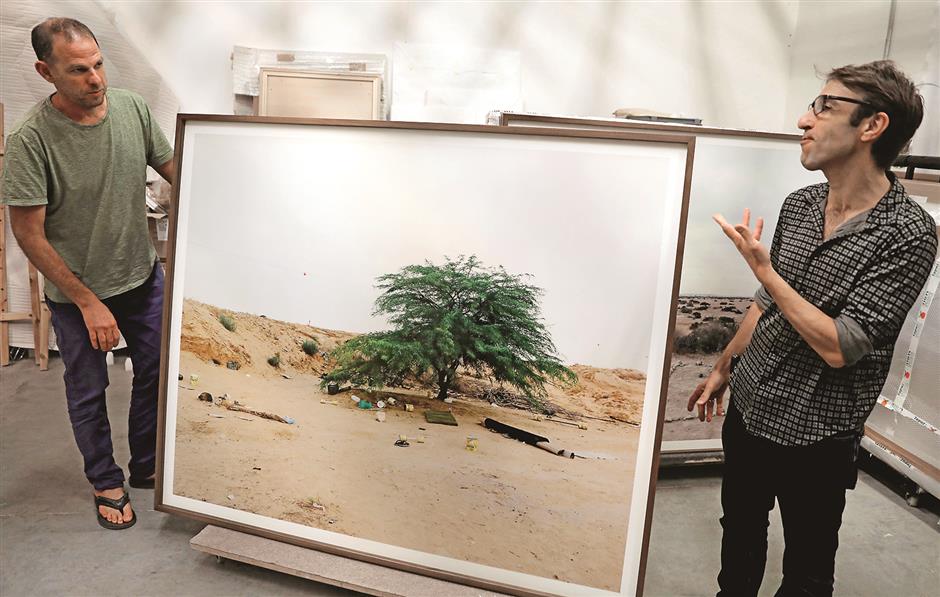Migrants unseen in Israeli photographer's exhibit

Art photographer Ron Amir (left) and curator Noam Gal stand next to a picture from the exhibition on migrants, "Somewhere in the Desert," at the Israel Museum storage room in Jerusalem.
Photographer Ron Amir spent years visiting African migrants in the Israeli desert to understand the new world they had created. He came back with a set of pictures without people in them. The human-less photographs include objects such as a makeshift bench and gym or a mud oven, composed in a way that hints at the migrants’ desperation and their attempts to manufacture new lives.
The exhibition, previously on display in Israel, is set to move to the Museum of Modern Art of the City of Paris, where it will open on September 14 and run until December 2.
Amir said recently at the Israel Museum, where the exhibition appeared in 2016, that keeping people out of the pictures was a way to stimulate questions about what the viewer sees.
It was a means to “open another channel of observation that enables developing broader connotations on these sites,” the Israeli photographer said.
In one, a plank of thin metal sits atop three stones, wild shrubs behind it leading to a cloudless sky and a red ball attached to power lines.
The understated photograph, its yellowish desert shades punctuated by red flecks of garbage, is named “Hamed Alnnil’s Bench.”
Alnnil, one of the thousands of African migrants who were held at the Holot detention center near Israel’s border with Egypt, had ventured out of the open facility’s boundaries to create his much-needed personal space.
Amir had visited Holot over the years 2014-16 and befriended some of the facility’s residents, who showed him the spaces they had created — most of them hidden away in the desert land surrounding Holot.
Amir created a series of photographs of the special spaces, with some of them serving clear functions, such as the gym, an oven for baking bread or a row of stones delineating the outline of a small mosque. Others, such as a line of empty water bottles half-buried in the hard desert ground, give no hint as to their purpose. The 30 photographs show “what happens when people have a lot of time to kill,” Amir said.
To Noam Gal, the Israel Museum’s curator of photography, the exhibition is also “an opportunity to draw public attention to the phenomenon (of asylum seekers) from the artistic perspective,” he said.















